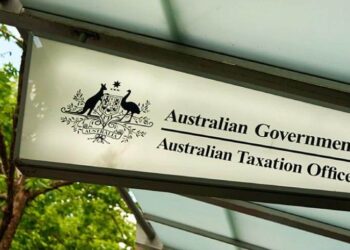Speaking to SMSF Adviser, ATO assistant commissioner Dana Fleming said it was important for trustees to note that they had a legal requirement to develop a considered investment strategy, rather than approaching the strategy document as a basic compliance exercise.
“I’m in the process of developing investment strategy web guidance and it makes the point that an investment strategy that just lists on its own zero to 100 per cent as the investment range for every type of asset class is not an acceptable investment strategy – you may as well just not have one,” Ms Fleming said.
“The guidance will make it clear that this approach does not in our view address the requirements [in regulation 4.09]. No doubt there will be some feedback on that but I think it’s an important line in the sand to say that this approach is not turning your mind to formulating your investment strategy to achieve your retirement objectives, that’s just saying I might do anything and I’m not sure what it is.”
Ms Fleming said the ATO was reluctant to publish a template or detailed guidelines around what constituted an acceptable investment strategy from a compliance perspective, as this would defeat the purpose of the SIS regulations which stipulated trustees had to carefully consider multiple factors such as diversification, risk, cash flow and liquidity when formulating their strategy.
“We’ve had lots of people ask us to provide an investment strategy template, but I am not travelling this path because as soon as you give someone a template they think they can tick boxes and that is solving their problem,” she said.
“The problem is not completing a form in the right way, the problem is have you had a meaningful conversation with someone who can work with you to establish what your retirement objectives are and that you are happy that what you’ve invested in meets those objectives.”
Ms Fleming added that while the ATO letter campaign around diversification had been “a great awareness raising campaign” around trustees’ legal obligation to develop a comprehensive investment strategy for their fund, it had been a learning experience for the regulator around effective ways to communicate with SMSF trustees.
“Certainly for any future trustee correspondence, we plan to socialise it with a trustee group, who are not professionals, to make sure that the message they take from it is the same as what our intention is,” she said.
“What I would do differently is make sure the first sentence [of the letter] is reassuring people that they haven’t done anything wrong. That is where I think we really missed the mark as the reaction to the letters showed a lot of people read it and thought they were getting a penalty notice.”



Maybe we should all wait for the ATOs guidance to be released before losing our *SMSF* too much.
For goodness sake people, SIS Regulation 4.09(2) does NOT require that trustees must state a range for the various investment areas. It simply requires trustees to formulate, review regularly, and give effect to, an investment strategy that has regard to the whole of the circumstances and objectives of the fund including, but not limited to, risk, return, cash flow, diversification, liquidity, ability to discharge liabilities and member insurance. Now, if that isn’t sufficiently broad enough to allow trustees a great deal of flexibility in devising an investment strategy, then bugger me. All this stress about investment category ranges is completely unnecessary.
Does the ATO hold a AFSL Licence so that it can advise trustees about their investment strategies? I think not. No sane person would knowingly make an investment of money for future retirement in an asset that will lose income or capital. Investment strategies are only a plan, not an absolute. So a plan to have 0 to 100% in one asset class is correct, for the clients’ appropriate circumstances and timng of their investments.
I remember having a discussion with a Financial Advisor a year or 2 after the GFC. When it was still raw. He produced a strategy of 0-100% across a few asset classes including Australian equities and cash. I tried to say to him that this is not really an appropriate strategy. He said to me that not having 0-100% is not appropriate. He wanted the ability to fully liquidate a client’s portfolio to 100% cash if needed.
While I don’t agree, it was hard to argue against that logic, especially on the back of the GFC.
What issue is the ATO trying to solve? Are SMSFs systematically underperforming or running into issues. If not, leave them alone and solve a real problem.
According to their research they are underperforming. I’m not saying I agree with the research but that is the conclusion they reached.
? You right not to agree with the research. SMSF’s tend to carry a lot of fixed interest and cash assets. In a world where cheap money and government policy is specifically aimed at driving up the price of risk assets, to encourage a wealth effect etc, many an SMSF may end up having the last laugh when the asset price bubble bursts.
The Cooper Review determined legislation around investment strategies was largely pointless. Either they should not be required, or legislation should be changed to require more detail. Looks like the ATO thinks its the Government. – deciding which way to go and trying to write legislation through a guideline.
Will 0 – 90% for each asset be acceptable, after due consideration of course?
This is not new news as it has been the Commissioner’s view for as long as I can remember but it is great that there is some clarification. However it puts into the spotlight those administrators and auditors who have been doing the old “0 -100%” investment strategies. Are they exposed to any investment losses under section 55 of SISA or Cam & Bear v McGoldrick. My advice is that let’s all learn, clean up client investment strategies with robust benchmarks across the twelve asset classes and take it as given that all SMSF actions by Trustees are open to scrutiny and the Commissioner is going to be active in communicating with SMSF Trustees.
What are the 12 asset classes? How are they defined? What is the economic rationalism for the definitions? What evidence is there that 12-asset class as opposed to agreeing there are only 3, 6 or maybe there are 15 has anything useful to say about future returns. Why does robust bench marking improve returns; where is the evidence for that? Have you factored in derivatives and their capacity to correlate the performance of so-called different asset classes (which further questions the usefulness of the different definitions)? What about global debt, now 310% of global GDP, and the impact or otherwise of international Central Bank money printing? QE and related polices have triggered widespread asset price inflation so why is widespread deflation not a possibility? Section 55 may be riveting stuff for some but to me it is just more never ending useless red tape. Yes, you must have an investment strategy for an SMSF but please spare me the argument that it is a logical and rational thing to do if you want to maximise returns. You cannot just pluck 12 subjective definitions and then declare that robustly bench marking is the answer. Yes, It will help with a strip of red tape called Section 55 but it ends there.
Heavy handed ATO simply doing the Industry Funds and Labor party work to try to scare SMSF’s from LRBA property investments.
Note to ATO, Labor, Industry Super and all your left wing commie buddies – YOU LOST THE ELECTION !!!
Get over it and stop trying to kill the motivation for people to self fund their retirement via their owns means and own decisions in SMSF.
Settle mate. These sorts of comments are not productive.
What is wrong with 0 to 100% – I have a client that does just that – near zero in the bank and near 100% in listed shares – so his fund can now only hold 90% in shares?? This bloke has made more returns in his fund than the ATO could only dream of.
We are 97% domestic shares. We don’t want anything else. What’s wrong with that? We get s decrntvincome.
As Dana has so clearly stated, an investment strategy that states an investment range of 0-100% is not stating a range at all. Financial planners should have no problem in assisting to build an appropriate strategy given that benchmark details are easily extracted from an SOA. This is why we have devised our investment strategy tool to work in conjunction with an SOA. Unadvised trustees will have greater difficulty.
David, in your opinion, is an ‘Allowable Range’ of 0-100 OK if you then have a clearly defined Target Asset Allocation also? I would have to think yes. Thanks
How so? If an SMSF accumulates 100% cash with a view to buying a commercial property in a few years, it will start out with 100% cash and 0% property, then move to almost 100% property and 0% cash, and thereafter the cash range will be 0%-20% (as contributions come into the cash account during the year, and are then used to pay loan interest, admin and tax as it arises). So, in years 1-3 the correct asset allocation target for the investment strategy may well be 0-100% cash and 0-100% property. Anything else would be total BS.
Thanks for disclosing your conflict of interest as a seller of investment strategies. Not everyone is honest enough to do that.
Having a 0-100% allocation range for cash is an entirely valid strategy
Like many a financial planner you cannot see the wood for the trees. I notice comments such as ” the Cooper Review determined legislation around investment strategies was largely pointless”, “You cannot just pluck 12 subjective definitions and then declare that robustly bench marking is the answer” and “What is wrong with 0 to 100% – I have a client that does just that – near zero in the bank and near 100% in listed shares – so his fund can now only hold 90% in shares?? This bloke has made more returns in his fund than the ATO could only dream of.” Investment strategies are suspect and may actually be totally pointless. From that I conclude your comment that “unadvised trustees will have greater difficulty” as reading “unadvised trustees may be unadvised but the advice on offer is of very little use to them.”